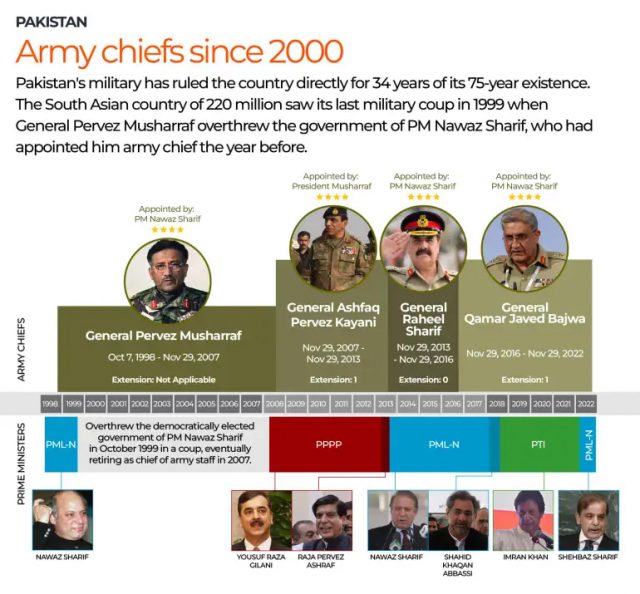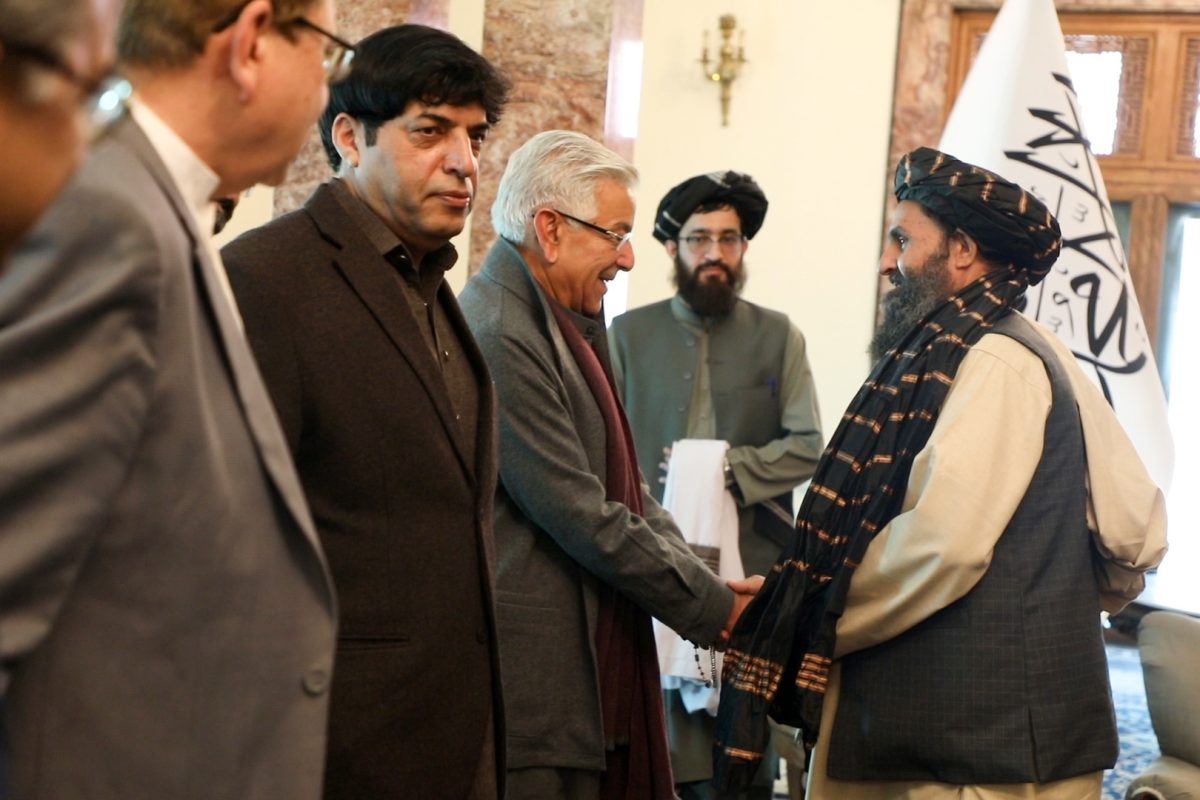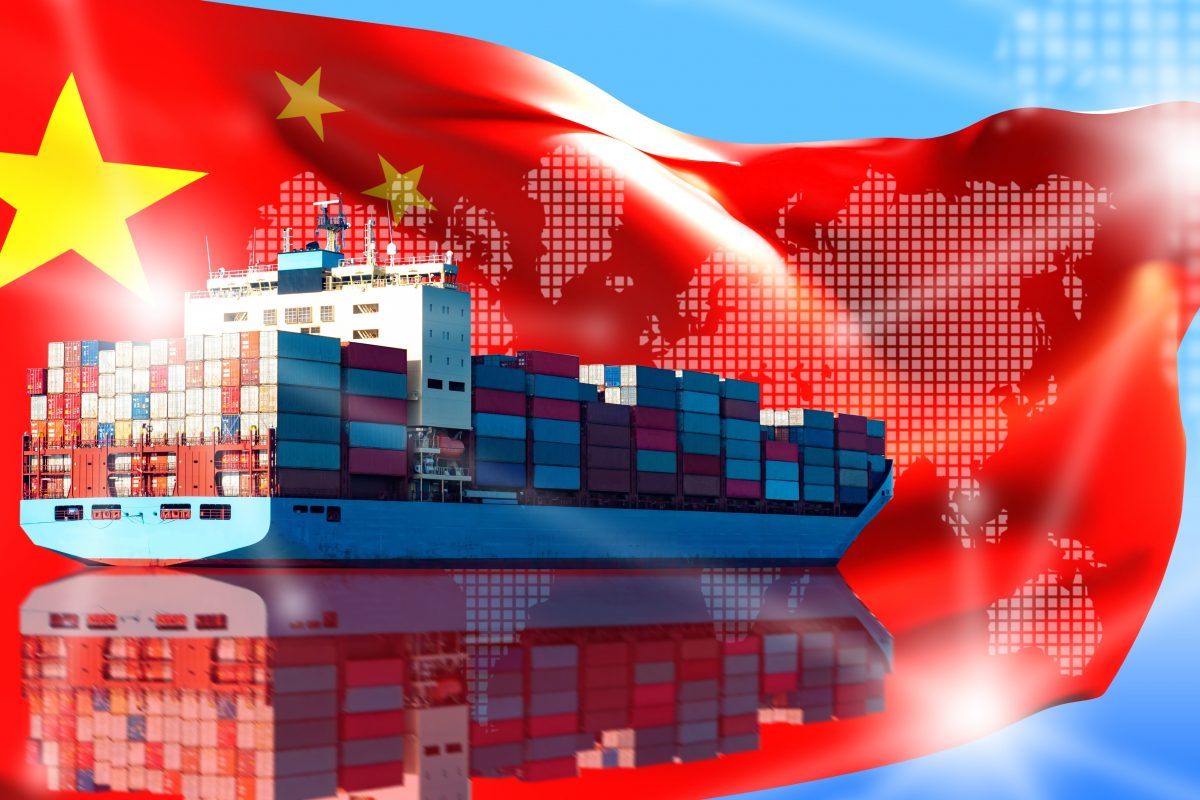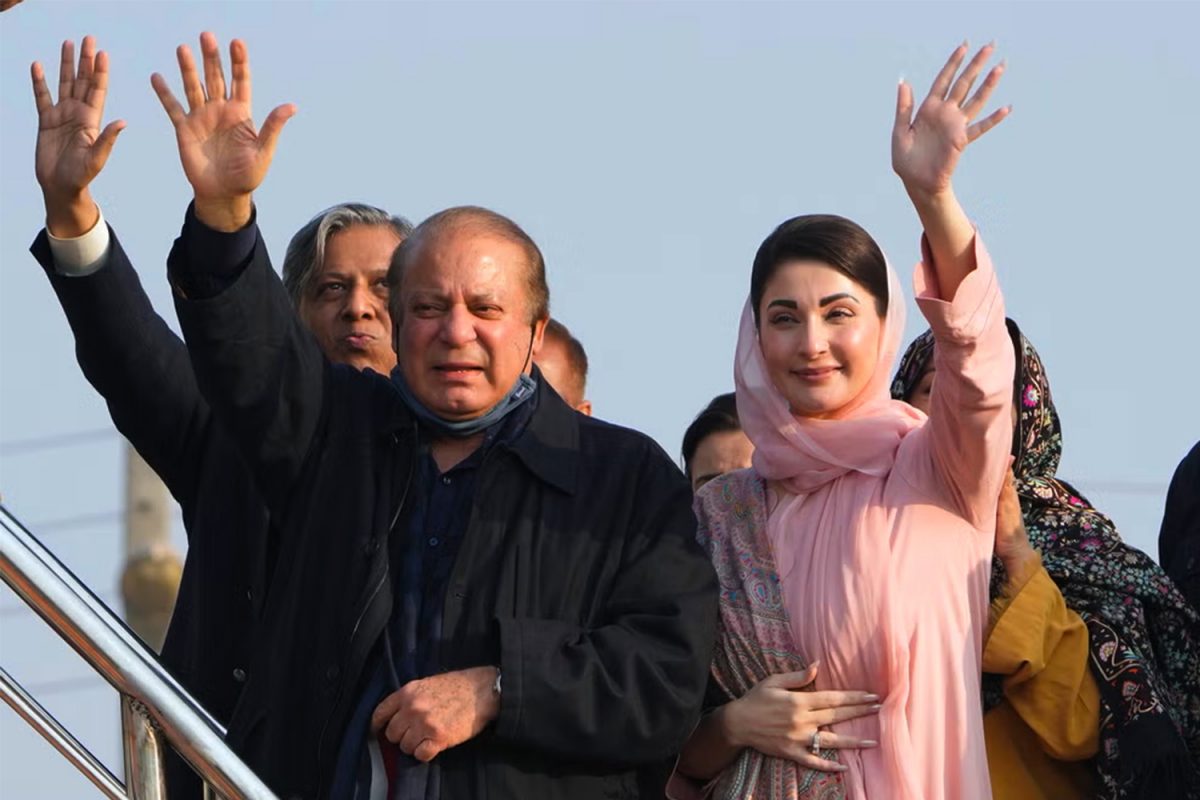After months of tensions and weeks of speculation Lieutenant General Asim Munir has been confirmed as Pakistan’s new Army chief, as General Qamar Bajwa retired after a six-year stint on the 29th of November. Both Prime Minister Shabaz Sharif and President Arif Alvi confirmed the promotion to arguably Pakistan’s real seat of power. It is strange that a military promotion should garner such widespread global attention. In the US and Russia as well as China, military appointments are mundane affairs with little interest from civilians or the global media. But Pakistan’s military plays a rather unique role in the country and the world and that’s why there is global interest in Pakistan’s Chief of Army Staff (COAS). Pakistan’s military plays a much larger role than a traditional military force and over the years it has become an army with a state, rather than a state that has an army. The military also has a distinct relationship with the US that has had a major impact on its posture as well as the country.
Pakistan’s military was able to get to power and remain in power in South Asia due to the fallout from partition and then the failure of Pakistan’s founders and political class to tackle the numerous challenges the nation faced after its birth. Pakistan’s army was established with many handicaps which is what would push her into the arms of the US. The British planned to split military assets at partition 64:36%, with India getting the lion’s share due to its larger territory and population. India’s leaders ensured Pakistan only got 2.8% of its allocated ordinance, whilst not a single one of the 249 allocated tanks were delivered, whilst most of the other military equipment was either damaged, unserviceable or obsolete. Pakistan received 6 armoured divisions to India’s 14. India inherited all the ordnance factories as they were all based in her territory. The lack of capital and infrastructure led Pakistan to seek economic aid, but Pakistan faced even bigger problems.
Pakistan’s first decade after partition had been a disaster and it was in this chaos the military would cement its role at the top of the nation’s hierarchy. Pakistan faced immense challenges in its first decade, which Pakistan’s founders and first generation of leaders were either weak, mediocre or incompetent to grasp. The Muslim league was in tatters by the end of the 1950s and regional parties and separatist movements were very popular. Pakistan’s first Prime Minister Liaqat Ali Khan was assassinated in 1951. Only to be replaced by Khawajah Nizamuddin who was a weak governor general prior to becoming Prime Minister. He would be dismissed within 2 years. Internal squabbles and intrigues greatly weakened the state with officials blaming each other for their own failures. There was no new constitution until 1956, and the multitude of challenges was beyond the state’s capabilities. Rather than deal with Pakistan’s challenges, President Iskandar Mirza, surprisingly on the 7th of October 1958, suspended the constitution, dismissed central and provincial governments and appointed General Ayub as Martial law administrator, against his own party’s administration. General Ayub would carry out Pakistan’s first coup on the 27th of October 1958. He sent three generals to tell the president that he had been removed as the office of the president was obsolete with martial law. Mirza was placed on an aeroplane and sent into exile to the UK, ushering in the first of the military’s many coups.
Pakistan faced immense challenges in its first decade, which Pakistan’s founders and first generation of leaders were either weak, mediocre or incompetent to grasp
Wooing the US
Pakistan’s founders and military officers saw the US early on as its path to development and salvation. Pakistan saw the Cold War and America’s containment strategy as the shortest and quickest way for her to develop the military and face India. Margaret Bourke-White of Life Magazine in an interview with Muhammed Ali Jinnah in September 1947 said: “In the weeks to come I was to hear Quaid-i-Azam’s thesis echoed by government officials throughout Pakistan, ‘surely America will build our army’ they would say to me. ‘Surely America will give us loans to keep Russia from walking in.’ But when I asked whether there were any signs of Russian infiltration they would reply almost sadly, as though sorry not to be able to make more of an argument. ‘No, Russia has shown no signs of being interested in Pakistan.’ ”
Pakistan’s narrative was that it was on the front lines against Soviet Communist expansion and that it needed military and economic aid to defend against the spread of communism. The hope of tapping the US treasury was voiced so persistently that American officials wondered whether the purpose was to bolster the world against Bolshevism or to bolster Pakistan’s own uncertain position as a new political entity.
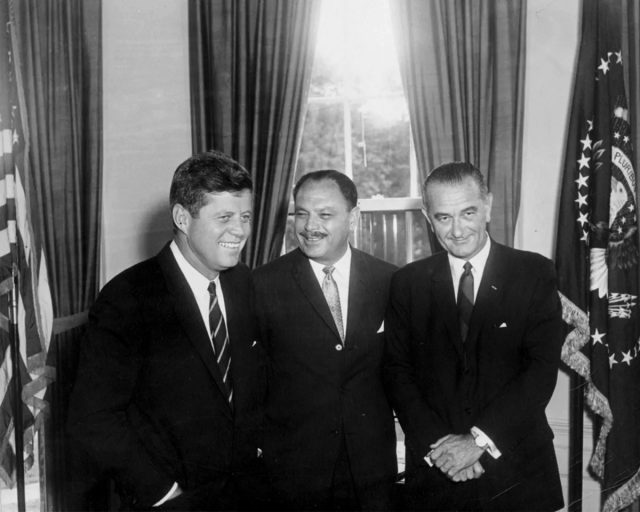
From 1951 the US had concluded that India under Nehru was not going to join the US camp against communism, therefore Pakistan would be the best option in the region and should be built up as a counterweight in the region to contain both Russia and China and the spread of communism into the region. This was made all the easier when Ayub Khan became Pakistan first Commander-in-Chief in 1951. He was an unabashed pro-American and embarked on a relentless campaign to co-opt Pakistan into America’s Cold War containment strategy. When Henry Byroade became US regional assistant secretary in late 1951, he believed a defence arrangement extending from Turkey to Pakistan, a geographical arc of Muslim nations bolstered by US military assistance would help stabilise the region and stop Soviet inroads. This culminated in a mutual defence agreement between the US and Pakistan in 1954, with one rather interesting clause:
The Government of Pakistan will use this assistance exclusively to maintain its internal security, its legitimate self-defence, or to permit it to participate in the defence of the area, or in United Nations collective security arrangements and measures, and Pakistan will not undertake any act of aggression against any other nation. The Government of Pakistan will not, without prior agreement of the Government of the US, devote such assistance to purposes other than those for which it was furnished.
The decision to align with the US was determined by a narrow elite in Pakistan. There was no debate in parliament. When there was a debate in 1954, the opposition, mainly from East Pakistan, strongly opposed such moves. In the end a handful of politicians, civil servants and military men determined Pakistan’s destiny was with the US.
The Abused Partner
With Pakistan’s military the dominant faction in the country, the US saw Pakistan as a key part of its containment strategy in the region. Each time the US focused on the region it would ensure the military was in power, which is what took place with the Soviet invasion of Afghanistan in 1979 and then the US invasion of Afghanistan in 2001. But this was no happy marriage and problems began right from the beginning. The US came to express doubts of alignment with Pakistan in the late 1950s. Both the US president and CIA, at the time came to see that Pakistan’s motivation was less to do with communism but more to stand up against India. Declassified US intelligence reports of this era would go on to confirm this.
America’s supply of military equipment, economic aid and loans was for the Cold War and not for use against India. In fact, the US saw India as the power in South Asia after partition, but it was unable to woo her as Nehru insisted India would not take a side in the Cold War. The US continued to reach out to India in the hope of winning her as an ally. When India and China went to war in 1962 President Kennedy supplied US Military aid to India. On the other hand, President Kennedy wrote to Ayub Khan in 1962, while the Sino-India border war was at its height, telling him that he should write to Nehru, assuring him that Pakistan did not have any intention of attacking India during its war with China. Ayub Khan wrote back a long letter complaining that India had posed a major military threat to Pakistan for fifteen years. But it fell on deaf ears ion Washington.
But when Pakistan went to war with India in 1965 in Kashmir and India’s subsequent onslaught into Punjab the US would be furious with Pakistan’s military for using US supplied tanks and equipment and would freeze US sales of military equipment to Pakistan. This would be the first of many such military freezes and eventual sanctions. It would take the Soviet invasion of Afghanistan in 1979 and the cooperation of the intelligence agencies of both countries for the frozen equipment to resume and upgrades and parts to begin flowing.
But when Pakistan went to war with India in 1965 in Kashmir and India’s subsequent onslaught into Punjab the US would be furious with Pakistan’s military for using US supplied tanks and equipment
The collapse of the Soviet Union in 1991 would see US priorities change and Pakistan get caught up in this. Throughout the 1990s the US pushed the world into nuclear non-proliferation treaties and restrictions on the development of nuclear weapons, whilst the US provided Pakistan with its original nuclear reactor and turned a blind eye to Pakistan’s nuclear weapons development. The US saw Pakistan’s nuclear programme differently in the 1990s and it blocked the delivery of dozens of new F-16 fighter jets to protest Pakistan’s nuclear weapons program. Pakistan’s nuclear test of 1998 brought a fresh wave of sanctions from Washington.
The US expected Pakistan’s support when she needed it, but aside from this she viewed Pakistan as any other nation and would not be given any special treatment. This is why US-Pakistan relations have always been up and down as the US doesn’t really see Pakistan as an ally or a partner but as a vassal nation that’s expected to serve her, execute her plans and be part of her foreign policy. This was on full display during the war on terror and America’s invasion of Afghanistan, despite Pakistan facilitating the war effort, she was labelled as the problem, when the US was bleeding to death. Despite this the US expected Pakistan to bring the Taliban to the negotiating table, which she fully complied with.
The Garrison State
Pakistan’s military has remained in power, whether directly or behind the scenes by establishing a compliant relationship with the US but also by building a narrative, whether real or imagined, of a threat from neighbouring India that only she can defend the country against. This narrative has allowed the military to become a corporation with economic interest across the country.
The narrative that the army is the only institution that can protect Pakistan began right from the beginning in the war against India in Kashmir. Pakistan’s narrative of this war was the brave warrior fought the Hindus and gained 33% of territory of Kashmir. The blame of not capturing all of Kashmir was laid at the British officers who led the Pakistan army at the time. The military built the case that only they can defend the country and stand up to India.
The 1965 war was a debacle. A small coterie of top generals launched a war, believing they could infiltrate Kashmir and expel the Indian soldiers stationed there. This led to India opening a front against Lahore, they were only 6 miles from Lahore when a ceasefire was agreed. The military narrative was that Pakistan’s brave soldiers defended Lahore and ensured it didn’t fall to India. Once again it was the military that could stand up to India, despite the fact that Pakistan’s army launched the war and gained no new territory in Kashmir.
The defeat of the Soviet Union’s invasion of Afghanistan, Pakistan’s organisation of the mujahidin, their training and arming further built the aura that the military was the premier institution in Pakistan. Similarly, the military has used the many operations against non-state actors in the 2000s to build the narrative of its central role in defending the nation.
Pakistan’s Largest Conglomerate
Pakistan’s military is now the largest conglomerate of business entities in the country. The military enjoys privileges such as the country’s biggest urban real estate developer and manager, with wide-ranging involvement in the construction of public projects. The military’s business activities are run through two entities, the Fauji Foundation (FF) and the Army Welfare Trust (AWF). The military’s Defence Housing Authorities (DHAs) also enjoy significant privileges in terms of federal sales tax exemptions and the earmarking of property tax, which goes solely to cantonment boards.
In 2016, the Pakistani senate was informed that the army runs over 50 commercial entities worth over $20 billion. Ranging from petrol pumps to huge industrial plants, banks, bakeries, schools and universities, hosiery factories, milk dairies, stud farms, and cement plants, the military has a finger in each pie and stands today as the biggest conglomerate of all business in Pakistan. However, the jewels in their crown are the eight housing societies in eight major towns where prime lands in well-manicured cantonments and plush civil localities in the possession of these societies are allotted to military personnel at highly subsidised rates. Even military awards are linked with the grant of farm lands and housing plots to military personnel.
The King Maker
The Military has managed to maintain its position in the country by organising the government and hand picking who gets to key positions. Nawas Sharif was picked and developed during the General Zia era in order to be Chief Minister of Punjab during the 1980s. He would go on to be the Prime minister throughout the 1990s. Whilst the Bhutto family emerged earlier than the Sharif family, Benazir Bhutto had a working relationship with the military and played a key role in the 1990s as the Intelligence services and army supported the mujahideen in Kashmir as well as the Taliban’s emergence to power across the border in Afghanistan. Both Benazir and Nawas Sharif would have difficult relationships with the military, but in the 1990s the army ruled from behind the scenes which allowed them to assume the mirage that they had real power.
Both Benazir and Nawas Sharif would have difficult relationships with the military, but in the 1990s the army ruled from behind the scenes which allowed them to assume the mirage that they had real power
Similarly, Imran Khan, who’s PTI party was long in the wilderness, came to be seen as a political asset by the military. Imran Khan needed the military to gain power, and Khan played his part in assuming leadership of military narratives, giving a civilian face to an otherwise military platform. This gave Khan broad and deep appeal within the military machine, as well as the public. But like Sharif and Bhutto before him, Imran Khan performed poorly with the economy and even worse with governance, being a major embarrassment to the army that facilitated his rise to power. But he made the biggest mistake of all when he tried to involve himself in military appointments. General Bajwa wanted Khan to announce the appointment of a new intelligence chief in 2021 so he could reassign Lt. Gen. Faiz Hameed, the head of the ISI at the time and a close ally of Khan’s, as the commander of Corps XI, headquartered near the border with Afghanistan. Khan dragged his feet, as he wanted to keep the Lt Gen, who handled Khan’s rise to power. This was the final straw for General Bajwa, who reached out to the Sharifs in London and what ensued was the eventual vote of no confidence that ousted Imran Khan in April 2022. This was not the first time a military creation turned against them. Nawas Sharif himself has been removed twice in orchestrated ousting’s, it will likely not be the last.
The military’s track record leaves a lot to be desired and its consumption of the nation’s budget and resources is unsustainable in the long term. Pakistan has a population of 225 million, which is expected to reach 330 million by 2050. There are over 1 million extra people entering the workforce every year searching for jobs that don’t exist. The country needs major investment in infrastructure, education, development and health, but over half the government budget goes to the military and debt repayments. Whilst the army has been able to dominate the state since Pakistan’s birth, the generals will find it much harder to maintain this going forward as the population grows.


